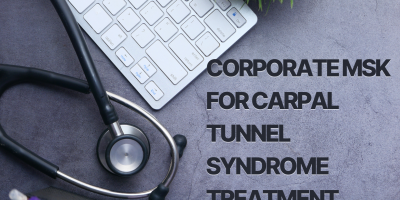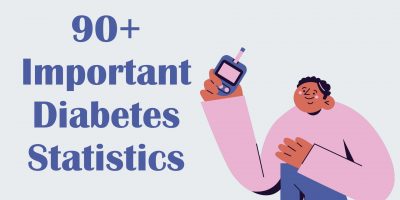
Corporate MSK for Carpal Tunnel Syndrome Treatment
For countless employees in the United States, work is a source of physical discomfort and pain. How can corporate MSK programs help?

A jarring investigation reveals that one in every six hospitalizations in the US comes with a surprise bill – the primary cause of medical debt.
The reality is medical debts often come up unexpectedly, typically after an accident or sudden illness. During a medical emergency, consumers are left with little to no option to “shop around” for a better deal and, in most cases, are only notified of the cost of the medical treatment afterward.
Thus, in an effort to lower costs and improve transparency in the healthcare industry, the United States government has implemented new health policies that make cost information more accessible to consumers and stakeholders.
With emerging regulations for healthcare pricing transparency and COVID-19 causing market disruption and changes in consumer behavior, how can organizations and patients adapt to the shift toward consumer-centric pricing transparency?
This article explores the new consumer protections and the subsequent benefits of price transparency in healthcare.

Surprise billing, also known as balance billing, happens when a patient receives an unexpected hospital bill for care from a provider not covered in their health plan’s network. Additionally, patients may incur surprise bills when receiving treatment at an in-network facility but receive care from an out-of-network ancillary provider.
Health plans, such as HMOs, may deny coverage for out-of-network care or pay only a portion of the bill, leaving patients responsible for the cost of the surprise bill. Patients often have little control over the providers they receive care from, particularly in emergencies.
The No Surprises Act, also known as No Surprise Billing (NSB), was signed into law on December 27, 2020, to address the growing costs of care associated with surprise billing.

The US Department of Health and Human Services (HHS) has implemented a new rule under the No Surprises Act, which includes provisions such as:
The rule aims to protect patients from these unexpected costs and ensure they are not left with the burden of paying for out-of-network care.
Healthcare is a complex and highly regulated industry, and the lack of price transparency results from many factors.
One major factor is the lack of standardization in healthcare pricing. Each healthcare provider, hospital, and insurance company has its own pricing model, making it difficult for patients to compare prices and understand what they are paying for.
Expenses for medical services and technologies are often considered trade secrets, with stakeholders claiming that secrecy provides a competitive advantage.
However, in the limited cases where transparency has been legislated and its impacts examined, such as in New Hampshire, results suggest that it led to increased competition. What’s more, a survey by Deloitte shows that 60% of consumers are more likely to go to a hospital that publishes its prices in comparison to the local market.
Additionally, the negotiated prices between insurance companies and healthcare providers are often kept confidential, making it difficult for patients to know the true cost of their healthcare services.
Pharmacy benefit managers (PBMs) and other stakeholders have a financial interest in keeping the system opaque, leading to confusion and a lack of competition.
A Health Care Cost Institute study found that the average price for a common medical procedure can vary by over 200% in different healthcare markets. An ambiguity of prices only creates confusion and makes it difficult for patients to make well-informed decisions about their healthcare.
Another factor is the lack of access to reliable, easy-to-understand, and up-to-date information. Many healthcare providers do not have the resources to keep their pricing information up to date, and even when they do, it can be difficult for patients to access this information in a clear and understandable format.
Furthermore, the complexity of healthcare insurance and billing systems can also contribute to the lack of price transparency. Patients often receive bills from multiple sources, such as the hospital, the doctor, and the insurance company.
However, it can be difficult for them to understand the charges and how they were calculated, hence why surprise billing is common.
As a result, the US healthcare market is a labyrinth of intermediaries, contracts, and stakeholders, making it difficult even for experts to navigate. Asymmetries of information between patients and healthcare providers, coupled with the lack of transparency in prices and costs, lead to market inefficiencies and multiple market failures.
The lack of transparent pricing in healthcare has led to higher patient costs, which can result in medical debt and negatively impact financial wellness. In fact, medical debt is a leading cause of bankruptcy in the United States.
In a survey by the Kaiser Family Foundation, 26% of adults with private insurance reported having difficulty paying their medical bills in the past year. Additionally, a study by the Commonwealth Fund found that one in four Americans with private insurance have faced medical bills they were not expecting, which they couldn’t afford to pay.
Another reason why price transparency is important in healthcare is that it empowers patients to make informed decisions about their health and finances.
Patients aware of the costs of different treatments and procedures are better equipped to make informed decisions and avoid unnecessary or overpriced procedures.

Price transparency also helps to reduce overall healthcare costs by encouraging competition between healthcare providers and facilities. When patients can compare expenses for similar services, healthcare providers must work to reduce their prices and improve the quality of their services to remain competitive.
A study by the Health Care Cost Institute found that healthcare spending was 11% lower in states with greater price transparency than those without.
Another study published in Health Affairs found that prices for standard medical procedures varied widely even within the same geographic area, demonstrating the need for price transparency in healthcare.
In conclusion, the benefits of price transparency in healthcare have the potential to improve patient outcomes, promote competition, reduce healthcare costs, increase accountability, and enhance transparency and trust.
Amidst the shifting opinions on billing transparency, it is crucial to consider both the benefits and its potential downsides.
Empowers Patients: Price transparency allows patients to make informed decisions and compare prices across different providers, ultimately leading to better decision-making. According to a survey conducted by the Health Care Cost Institute, 70% of patients want to know the cost of their medical procedure before undergoing it.
Moreover, by providing patients with clear, accurate information on medical treatments and procedures costs, providers can build trust and foster open communication with their patients.
Reduces Healthcare Costs: When patients have access to cost information, they are more likely to choose less expensive options, which in turn puts pressure on providers to lower their prices. This creates a competitive marketplace where providers must work to reduce costs and offer better value to patients.
Improves Quality of Care: Price transparency can also improve the quality of care by encouraging providers to focus on delivering high-quality, efficient, and effective care.
Another study showed that, when given access to comprehensive price and quality reports, 80% of healthcare consumers will choose the provider that offers the highest value.
Can be Confusing: Some patients may find the cost information overwhelming or difficult to understand, particularly when dealing with complex medical procedures. This can lead to confusion and frustration, which may negatively impact their health.
May Discourage Use of Necessary Services: Patients concerned about the cost of their care may avoid necessary medical treatments or procedures. In the long run, this can lead to health complications and more expensive care, especially for patients with chronic illnesses.
Can be Inaccurate: Price transparency information can be incomplete or inaccurate, particularly regarding out-of-pocket costs or costs for complex medical procedures.
Healthcare organizations have faced difficulty in achieving the goal of price transparency due to the inherent unpredictability of delivering health care to individuals.
Overall, while there are many pros and cons to consider, the benefits of price transparency in healthcare outweigh the potential downsides. By empowering patients, reducing costs, and improving the quality of care, Price transparency can help create a more efficient, effective, and affordable healthcare system for everyone by empowering patients, reducing costs, and improving the quality of care.
Costs and transparency in healthcare are primary concerns for people in the United States and have been consistently ranked as one of their top concerns in recent years.
Healthcare spending accounts for a significant portion of the United States economy and continues to grow at an alarming rate. In 2018, Americans spent an estimated $3.5 trillion on health care, representing 18% of the US economy.
The US spends more on healthcare than any other nation in the world, with spending expected to grow at an average rate of 5.8% annually through 2025.
Despite this, life expectancy has dropped to 77.3 years – the same as it was two decades ago, in 2003. The high cost of healthcare and its increasing financial burden on patients has put pressure on healthcare providers to reduce costs.
One potential solution to the high cost of healthcare is price transparency. In particular, the Journal of Medical Economics found that price transparency could reduce healthcare spending by $100 billion annually. A reduction in expenditure of that size would significantly impact the US economy and help curb the rising cost of healthcare.
By giving patients information about prices, they could shop for the best bargains and make more informed decisions about their healthcare. This competition also forces hospitals to keep prices down, which helps reduce costs.
In addition to financial concerns, the healthcare industry is facing numerous other challenges, including a high rate of clinician burnout and a significant number of clinic closures. Collection agencies held $140 billion in unpaid medical bills in 2021, which was $81 billion only five years prior.
These challenges have put healthcare providers under extreme cost pressures and highlight the need for solutions to reduce costs and improve the overall quality of healthcare.
Overall, the benefits of price transparency in healthcare are clear. By giving patients information about prices, they could make more informed decisions and reduce their healthcare costs. This, in turn, would help reduce the financial burden on patients and help the healthcare industry overcome its numerous challenges.
In recent years, healthcare providers, health insurance companies, and technology companies have been working to develop solutions that increase price transparency and help consumers understand what they will pay for medical services.
Healthcare price transparency solutions refer to initiatives and technologies to increase price transparency in the healthcare industry.
One of the most popular solutions is the use of cost-comparison tools, which allow patients to compare the costs of various medical procedures and services. These tools or websites typically provide information on the prices charged by different providers, as well as information on quality and patient satisfaction.
With the implementation of the Centers for Medicare’s legally required “user-friendly” cost estimation tools set, pricing is becoming a crucial factor in a consumer’s decision-making process when selecting a healthcare provider.
Results show that consumers are beginning to adopt the same shopping behavior for healthcare services as they do in other industries. The Deloitte Global Healthcare Consumer Survey showed that 40% of respondents reported that they compare prices when choosing a provider for their healthcare needs.
In addition, health insurance companies are starting to offer more transparency about the cost of care. Some insurance companies now provide cost estimators on their websites, allowing patients to understand the cost of their care before they receive it.
As a result, healthcare price transparency solutions are becoming increasingly relevant and vital in the industry.

In conclusion, the benefits of price transparency in healthcare are numerous. As a result of the move towards greater pricing transparency, patients today can make better decisions about medical treatments, avoid surprise bills, and reduce the overall cost of healthcare.
While there are still challenges to be overcome, the healthcare industry is making progress, and the solutions being developed offer hope for a more affordable and accessible healthcare system in the future.
Senior Content Writer at Shortlister
Browse our curated list of vendors to find the best solution for your needs.
Subscribe to our newsletter for the latest trends, expert tips, and workplace insights!

For countless employees in the United States, work is a source of physical discomfort and pain. How can corporate MSK programs help?

In response to the demand for an improved consumer experience, both employers and insurers recognized and addressed the need for health advocacy programs.

Discover 50+ essential infertility statistics and get valuable insights into this prevalent issue.

Stay informed on diabetes statistics and explore corporate diabetes programs for essential resources like personalized counseling, dietary plans, and exercise routines.
Used by most of the top employee benefits consultants in the US, Shortlister is where you can find, research and select HR and benefits vendors for your clients.
Shortlister helps you reach your ideal prospects. Claim your free account to control your message and receive employer, consultant and health plan leads.